Why is Panderosa lemon good and why it is worth growing
Lemon Panderosa is one of the most unpretentious citrus fruits. The characteristics of the hybrid make it ideal for growing at home. The culture is distinguished by its unpretentious care and resistance to a number of negative factors, which often manifest themselves precisely when growing at home.
Not only is the Panderoza lemon attractive for its unpretentiousness. The plant is able to give its first harvest as early as 3 years after planting. In addition, during flowering, the tree produces dozens of fragrant and beautiful inflorescences, which creates a unique atmosphere of an indoor flower garden.
How to grow this miracle at home and what every grower should know about this hybrid - read on.
The content of the article
general description
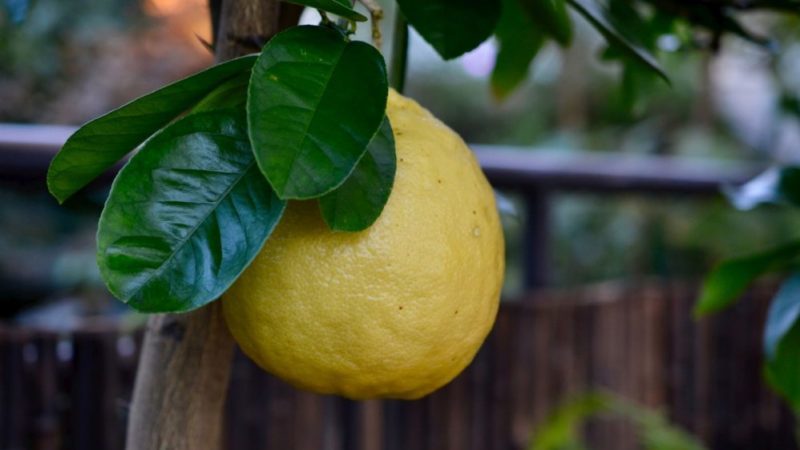
Lemon Panderoza is a cross between citron, grapefruit and lemon. There are two versions of its origin. According to one of them, the hybrid was the result of natural crossing of the indicated plants. According to another, he was brought out by the gardener Bowman.
It is interesting! From Latin the word "Panderoza" is translated as "heavy".
It is believed that the Panderosa lemon became the ancestor of several other hybrids. Among them: Yuzhny, Kievsky lemon, Skernevitsky.
Main characteristics
Panderoza, for all its unpretentiousness, has impressive characteristics. The lemon hybrid bears fruit abundantly, the tree looks decorative both in a pot and outdoors.
Panderoza characteristics:
- Crown. A small bush that does not grow higher than 2 m in open field. In a pot, the height of the plant does not exceed 1 m. The crown is compact, easy to form. The branches are thick and strong. The bark of young shoots is smooth, bright green. On old branches, it takes on a grayish tint and is covered with small cracks. There are no thorns on young trees, but with age they grow on the trunk and skeletal branches.
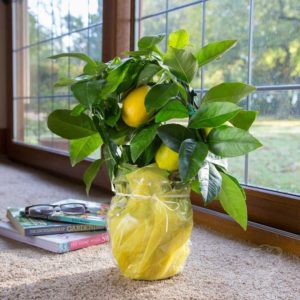
- Leaves. Bright green, glossy, round or oval. The edges are smooth, not serrated. The leaf plates are large, dense and rigid. They are located on short petioles with wings. The average life of each leaf is 3 g.
- Bloom. Abundant. Inflorescences are formed not only at the ends of the shoots, but also on the trunk and young branches. Often appear within a year after planting on seedlings. The flowers are white or creamy, sometimes with pinkish edges. Delivers a delicate sweetish aroma. The flowers are bisexual, they do not need artificial pollination.
- Fruiting. Abundant. More than 10 fruits are often produced on one plant.
- Fruit. Large, pear-shaped or rounded. The weight of one specimen varies from 400 to 1000 g. The rind is thick, pale yellow, with pronounced tuberosity. It tastes bitter, has a citrus aroma. The pulp is not too juicy, sour, without bitterness, the taste is pleasant. Suitable for human consumption. There are many seeds in the pulp.
- Transportability. High. The thick rind of the fruit protects it from damage.
Resistance to negative factors
Panderoza is prized for its ability to adapt to certain negative factors for lemons, which are often present in an apartment.
Among them:
- Drought resistance. With insufficient air humidity, the plant will not die. Also, unlike other lemons, Panderoza will not shed its leaves if not watered for 1-2 days.
- Cold resistance. The plant is able to withstand short-term cold snaps down to –10 ° C. In winter, the hybrid feels great at temperatures from +2 to + 10 ° C.
- The ability to bloom and bear fruit without winter dormancy. It is one of the few lemon hybrids that doesn’t have to look for a cool room during winter.
Lemon Panderoza has no pronounced immunity to disease and pests... Also, the plant begins to hurt with sudden changes in temperature.
Growing in a natural environment and at home
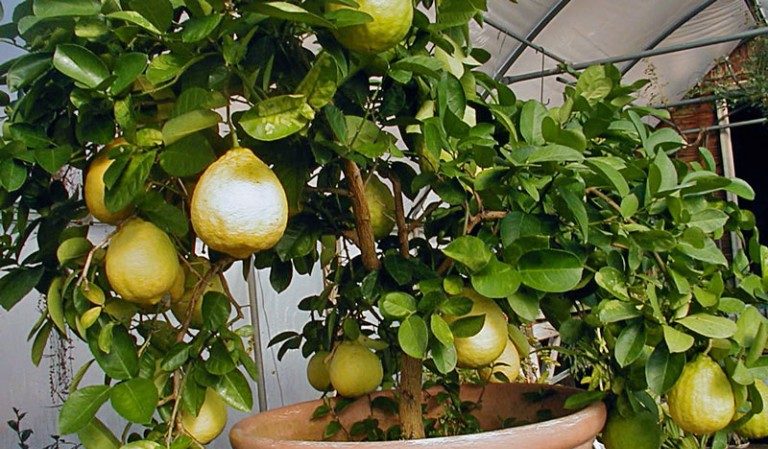
Panderosa is a dwarf lemon, since a citrus maximum height of an adult plant of 2 m is considered small. The tree looks compact both in the garden and at home. Florists often form a decorative spherical crown shape.
The hybrid is not grown to obtain fruit for sale. This is due to the fact that the taste of its thick-skinned fruits is quite controversial - there are varieties on which fruits with more impressive taste characteristics grow.
Often Panderosis grow in gardens and at home as an ornamental plant. Its fruits are eaten, but the plant is of the main value precisely during the flowering period.
Note! During the season 2-3 flowering periods of the tree are often observed. Already in the middle of summer, ripe and unripe fruits, ovaries and inflorescences are simultaneously present on the plant.
Advantages and disadvantages of the variety
Panderosa is popular with citrus growers as indoor plants. This is due to the presence of a number of advantages in the hybrid:
- short stature;
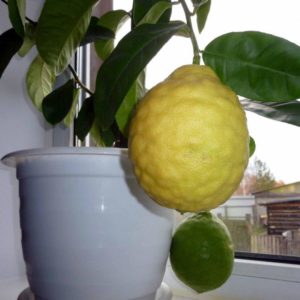
- compactness of the crown;
- dry air resistance;
- cold resistance;
- earlier fruiting;
- profuse flowering several times per season;
- high productivity;
- large-fruited;
- self-pollination.
The tree also has disadvantages. It is because of them that it is not grown on an industrial scale:
- thick, bitter rind;
- not particularly juicy pulp;
- the need to control the number of inflorescences;
- lack of immunity.
It is interesting! Panderoza lemons contain less vitamin C than varieties with thin-skinned fruits and a more pronounced aroma.
Reproduction methods
Panderoza is a hybrid. It cannot be grown in a generative way. Seed material will produce a wild game that rarely retains its parental characteristics.
Room lemon propagated by cuttings, which are cut from a fruiting tree. It is important that the mother plant is strong and hardy, free from traces of diseases and pests.
To obtain planting material, the strongest yearling branches are chosen. 10-15 cm recede from their edge. At least 3 living buds should remain on the segment. They are cut from the tree at a slight angle. Cutting places are treated with garden pitch.
Before planting, the cuttings are prepared - soaked for 2 hours in a light pink solution of potassium permanganate, and then for 2 days in "Heteroauxin" or "Kornevin". This will speed up the rooting process and prevent the development of diseases.
Lemon soil is mixed independently. To do this, take in equal proportions garden soil, humus and sand. The mixture is calcined in the oven or poured over with a dark pink solution of potassium permanganate.
Drainage must be poured into the bottom of the container. Expanded clay, broken ceramics or small crushed stone will do. Drainage is disinfected in the same ways as the soil.
It is convenient to use a cut bottle to root the cutting. Its upper part is used as a greenhouse, and the lower part is used as a container for planting a cutting.
A drainage layer is poured onto the bottom of the container. The rest of the volume is filled with soil. The stalk is planted to a depth of 3 cm, watered and covered with the top of the bottle.
The seedling is placed in a semi-shaded warm place. It is watered daily, sprayed and ventilated by unscrewing the bottle cap for 15 minutes.
When the root system of the lemon fills the entire jar, the plant is dived into a larger pot.
Growing technology
Lemon care at home should be correct and regular. Only in this way will the plant develop and bear fruit correctly.
Optimal conditions
Optimal conditions for the full growth and development of the Panderoza hybrid:
- Temperature. The air temperature in the room where the lemon is grown should vary between + 16 ... + 25 ° С. During flowering, the optimal temperature indicators are considered to be + 19 ... + 21 ° С. If it is warmer, the tree will be less fruitful to set. In winter, it is recommended to move the lemon to a room with a temperature of + 10 ... + 12 ° C.
- Lighting. The plant is placed on the southwestern or southeastern windowsill. There is enough light in the morning and evening, while the sun's rays will not burn the leaves during the day. The Panderoza hybrid does not need lighting in the winter.
- Humidity. Ideal moisture for lemon is 70%. Every day in the warm season, the tree is sprayed from a spray bottle. In winter, this is done if the lemon grows in a room with heating devices. Or they put a humidifier or a container of water next to it.
The Panderosa lemon tree, unlike many other citrus fruits, does not need a period of winter dormancy.
Advice! If it is not possible to put the lemon in a cool room in winter or provide it with additional lighting, it is recommended to rearrange the tree on the southern windowsill.
Further care
In order for a lemon to develop quickly, bloom and bear fruit, it is important to properly care for it. A detailed description of the growing process is presented in the list:
- Formation. When the main trunk reaches a height of 20 cm, its top is broken off to stimulate the formation of lateral shoots. Branches from 1 to 5 of the order are shortened by a third, after they are one year old.
- Bloom. If the Panderoza hybrid has bloomed before the third year of life, all inflorescences are cut off. In subsequent years, only the inflorescences on the trunk and on underdeveloped new shoots are cut off. Flowers slow down the development of the tree crown. It is not necessary to artificially pollinate flowers.
- Fruiting. It is recommended to remove the ovaries until the tree is 4 years old. For 4 years, 2-4 fruits are left on the plant. Further, the ovaries are not cut off.
- Watering. Lemon is watered daily during the hot season. This is done with warm, settled water, in the morning or evening, when the sun is not active. In winter, the number of waterings is reduced to 2 times a week,
- Top dressing. Due to the abundant flowering and fruiting, the hybrid is picky about feeding. They are applied every week, alternating between organic and mineral fertilizers. Mineral products must contain phosphorus and potassium (buy special complex fertilizing for citrus fruits or a solution of 1 tbsp. L of ash in 1 l of water). Rotten manure or humus diluted 1:10 with water is usually used as organic matter.
- Transfer. Transfer continues until the first fruiting. To cross the lemon tree, it is taken out of the pot along with a lump of earth. Remove drainage, top 2 cm of soil and rotten roots. Drainage is poured into the bottom of the new container and a lemon is installed. The free space is filled with soil, which is tamped and watered.
- Transfer. After the first fruiting, the lemon is transplanted once every 2-3 years. For this, the plant is abundantly watered and removed from the pot. All dried and rotten roots, most of the soil and drainage are removed from the tree. Transplanted into a new pot with fresh soil and drainage.
- Soil replacement... When the tree reaches the desired size, transplantation is stopped. Every year, they simply remove the top layer of soil in which salts accumulate.
- Cleaning. To prevent disease, lemon leaves are wiped every week with a damp, clean cloth. Every month the plant is washed under the shower.
Possible problems
It happens that when growing Panderoza, problems arise. The most common ones are presented in the list:
- The tree does not tolerate sudden changes in temperature. It starts to hurt, shedding fruits and leaves.If for the summer it is taken out into the street, then the tree is gradually accustomed to the new conditions, first taking it out for several hours, then for the whole day, then for a day. They also do if the lemon is going to be taken out for the winter in a cold place. The wood is brought into the house when the temperature in the room and outside is equal.
- Panderosis transplants are needed. This plant blooms profusely and bears fruit and consumes a lot of nutrients. For 1-2 years, the soil in which it grows becomes so poor that top dressing no longer helps, since the composition of the soil completely changes. Only transplanting into fresh soil will correct the situation.
- If the tree suddenly stops bearing fruit, it is worth arranging a cold winter for it. Although it is believed that the hybrid is not picky about dormancy, such a rest is likely to activate abundant flowering and the formation of a large number of ovaries in spring.
Harvesting and application of the crop
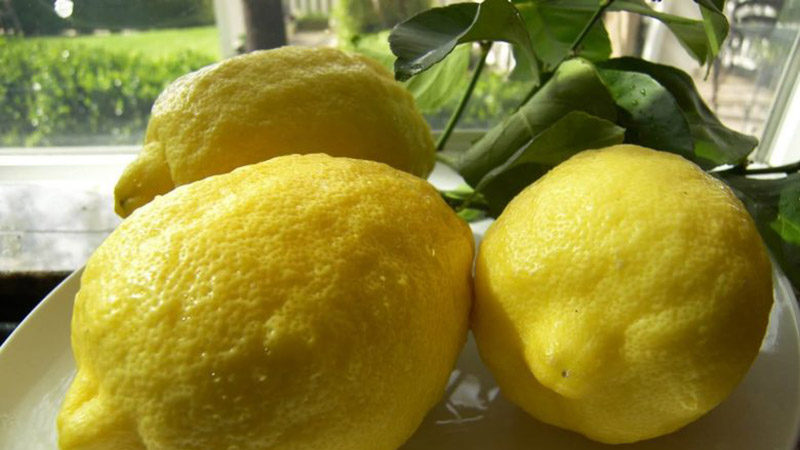
The Panderosa fruit is removed from the tree when the color turns uniformly yellow. Lemons should be firm and large. Some people prefer green lemons that have not yet turned yellow - they can also be eaten.
The pulp of the fruit is eaten without the skin. The zest of this fruit is also used in cooking.
Reviews
Gardeners' reviews about Panderoza lemon are ambiguous. Everyone talks about the unpretentiousness and beauty of the plant, but not everyone likes the taste of its fruits.
Andrey, Taganrog: “I grow lemons of different varieties at home, I already have a whole collection. Grows on the windowsill and Panderoza. A very beautiful plant, especially if you give it a spherical shape. I tried it with and without wintering, I did not notice much difference. It blooms beautifully and abundantly. I do not break off the inflorescences, so there are few of them. The fruits are as big as in the photo. I like their taste. "
Ksenia, Moscow: “I have a Panderoza growing on my windowsill, which I once bought at a flower shop. A truly unpretentious plant. Sometimes I forget to water it or feed it at the wrong time, but it still grows and gives beautiful pods. They taste good, but not super tasty either. Will go with tea. I do not grow it for the sake of the fruit, but for the beautiful flowering that lasts from spring to autumn. "
Oleg, Belgorod: “Panderoza is a tree for beginners. It will not surprise you with super tasty and fragrant fruits, but will delight you with beautiful flowering and early fruiting. At the same time, it will forgive minor mistakes and the absence of phytolamps ”.
Conclusion
Lemon Panderoza is one of the most unpretentious representatives of citrus plants. The hybrid is not afraid of dry air, cold snaps and lack of light. Able to do without a state of rest in the winter. Even a beginner citrus grower who does not have special equipment can cope with its cultivation.
At the same time, the plant is demanding on watering and soil composition. It must be regularly watered, fed and transplanted. The reward for such simple procedures will be beautiful flowering and unusual large fruits.